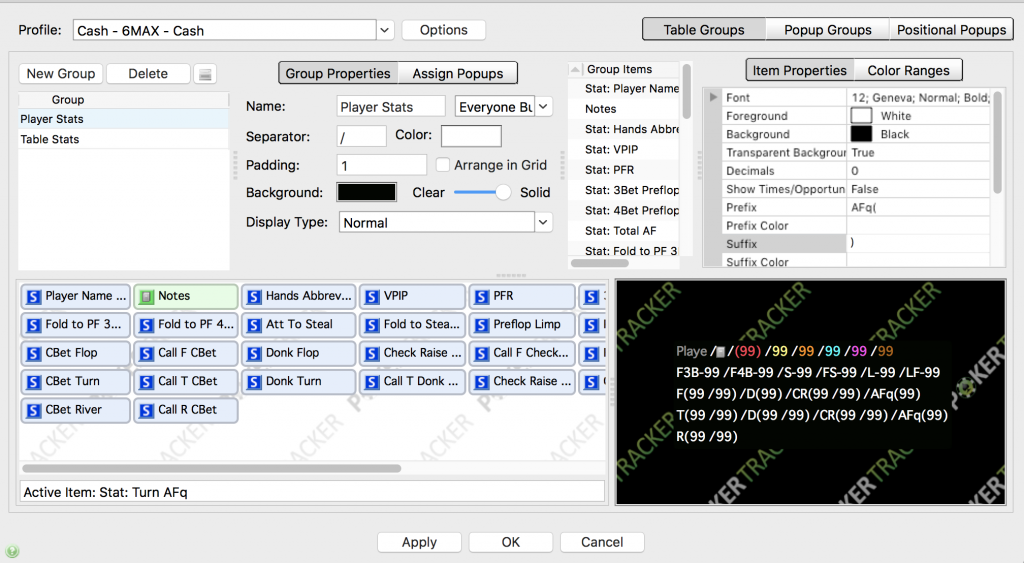 Often, even from regular poker players, you can hear strange interpretations of statistics. For example, that an opponent often barrels, so they will choose a c/raise line with a value hand. This may be an intuitive decision to reduce the opponent's aggression, but from a statistical point of view, such a line choice is usually wrong. These interpretations probably arise most often from a rather vague understanding of what exactly HUDs reflect and a player's tendencies.
Often, even from regular poker players, you can hear strange interpretations of statistics. For example, that an opponent often barrels, so they will choose a c/raise line with a value hand. This may be an intuitive decision to reduce the opponent's aggression, but from a statistical point of view, such a line choice is usually wrong. These interpretations probably arise most often from a rather vague understanding of what exactly HUDs reflect and a player's tendencies.
To improve your understanding of the game based on statistics, each player should first take a few preparatory steps:
- Understand the tendencies of the limit and format you are playing. Player styles will vary greatly between NL2 and NL100, so applying blind “good player” parameters to everyone is quite futile. Players at the NL2 limit will much less often have balanced 3bet ranges than NL100 regs, so you will often have to adapt your style to the tendencies.
- At least approximately know the statistics and ranges of a solid player. Ranges can often be set according to preflop tables you have, and later slightly adjusted according to tendencies by adding or removing hands.
- Understand what parts of the range are made up of certain hand combinations. For example, what percentage of the entire range are broadway, Ax, pocket pair hands. This knowledge can be very easily gained by using the “Equilab” program and analyzing the mentioned range parts. The most important thing is to apply this knowledge when thinking about possible parts of the range postflop, especially when playing more complex pots (3bet/4bet).
Of course, statistical knowledge needs to be constantly expanded and deepened to improve in this area, but before making any interpretations, you need to have a basic understanding. Using this foundation, we can ask ourselves the right questions about the opponent's statistics and potential counterplay.
One of the main mistakes players make is considering only one statistical unit. For example, we see that the opponent's 3bet is significantly higher than the average player at that limit. In such a case, the optimal choice should be determined not only by the 3bet frequency but also by other game style factors (postflop statistics, 3bet fold, etc.). Knowing the opponent's postflop play style will allow us to reasonably select the hands with which we will call and those with which we will choose to 4bet.
Of course, it is not necessary to evaluate absolutely every piece of data shown by the HUD, as sometimes optimal decisions will appear just by reviewing a few more important data points such as cbet frequency or folding frequency. For example, we are playing HUSNG against one of two players. The first player's cbet flop is 95% and remains similar on the turn and river. The second player's flop cbet is 35% and remains similar on the turn and river. We know that a player hits the flop on average one-third of the time.
How to exploit both cases? In the first case, we would want to use c/raise less with strong hands, as the opponent's range will have many bluffs, and there is no point in making them fold. We can expand our three-street calling range with slightly more marginal made hands, as the opponent will less often have something strong (of course, with some caution). In the second case, we would want to narrow our calling range somewhat, choosing c/raise bluffing lines less often.
The general tendency can be as follows:
- As the opponent's aggressive statistics (ISO, 3bet, cbet, etc.) increase, we will want to play more for value and bluff less ourselves.
- As the aggressive statistics decrease, we will want to narrow our calling range and choose bluffing spots more carefully.
Of course, these are just very simple examples. Other choices are possible for each way to adapt, but optimal decisions can only arise when we have a theoretical understanding of the game. The simplest way to start on the right path is to ask yourself each time, “What does this say about the opponent's range?” If we have a good theoretical foundation, the answer to this simple question will provide us with many possible answers. You can find the justification for the importance of theory in this video by Paulius Žulonas:
Protingas pokeris – apie visa tai, kas svarbu, bet ignoruojama (cash games)





